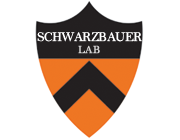The G protein-coupled estrogen receptor-1, GPER-1, promotes fibrillogenesis via a Shc-dependent pathway resulting in anchorage-independent growth
Type
The G protein-coupled estrogen receptor-1, GPER-1, coordinates fibronectin (FN) matrix assembly and release of heparan-bound epidermal growth factor (HB-EGF). This mechanism of action results in the recruitment of FN-engaged integrin α5β1 to fibrillar adhesions and the formation of integrin α5β1-Shc adaptor protein complexes. Here, we show that GPER-1 stimulation of murine 4 T1 or human SKBR3 breast cancer cells with 17β-estradiol (E2β) promotes the formation of focal adhesions and actin stress fibers and results in increased cellular adhesion and haptotaxis on FN, but not collagen. These actions are also induced by the xenoestrogen, bisphenol A, and the estrogen receptor (ER) antagonist, ICI 182, 780, but not the inactive stereoisomer, 17α-estradiol (E2α). In addition, we show that GPER-1 stimulation of breast cancer cells allows for FN-dependent, anchorage-independent growth and FN fibril formation in "hanging drop" assays, indicating that these GPER-1-mediated actions occur independently of adhesion to solid substrata. Stable expression of Shc mutant Y317F lacking its primary tyrosyl phosphorylation site disrupts E2β-induced focal adhesion and actin stress fiber formation and abolishes E2β-enhanced haptotaxis on FN and anchorage-dependent growth. Collectively, these data demonstrate that E2β action via GPER-1 enhances cellular adhesivity and FN matrix assembly and allows for anchorage-independent growth, cellular events that may allow for cellular survival, and tumor progression.

